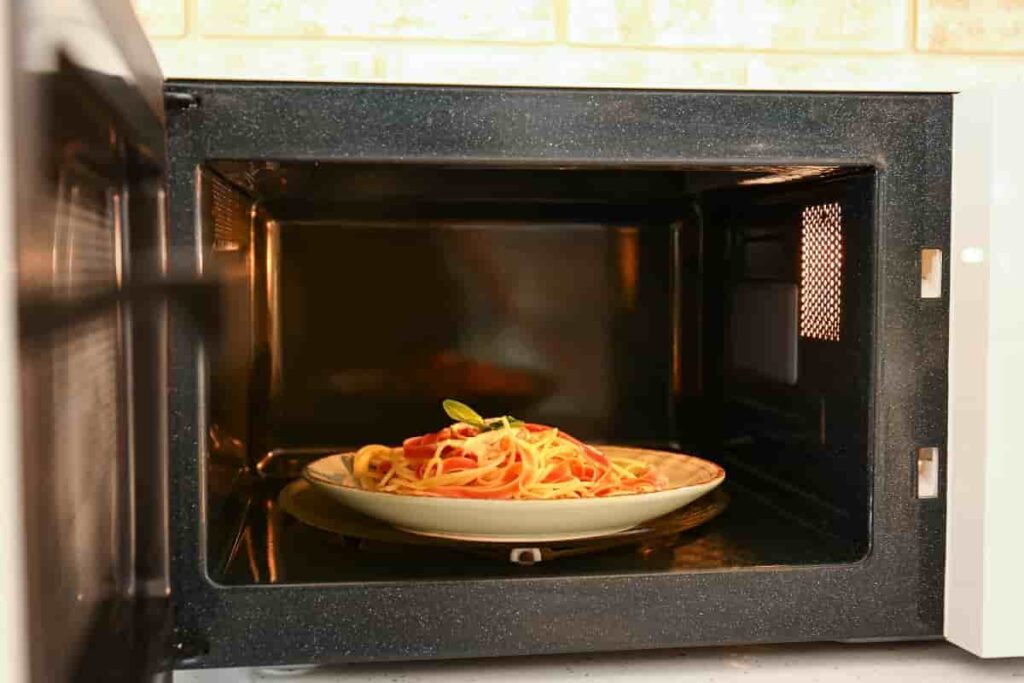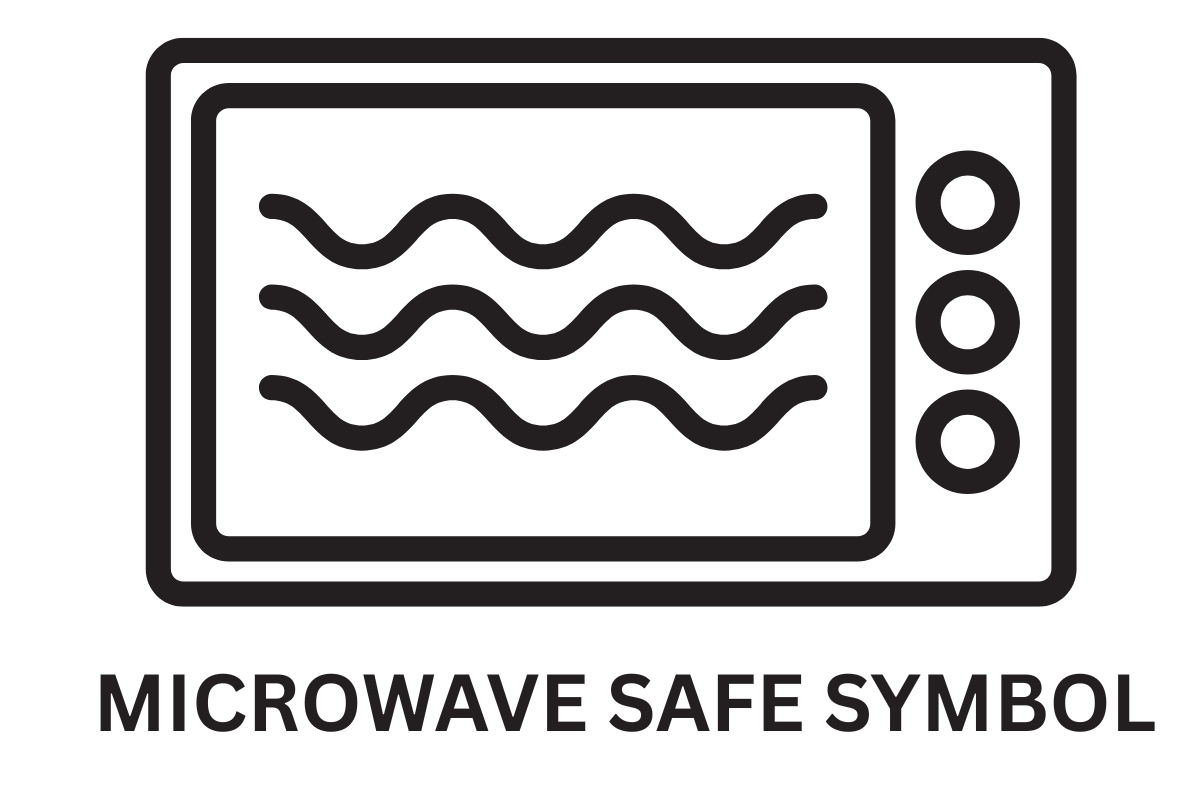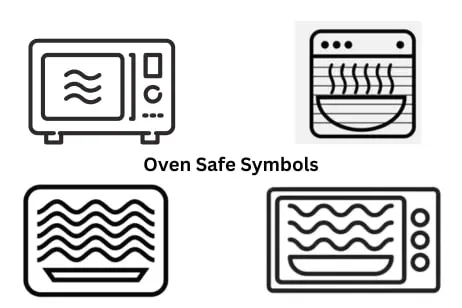When cooking or reheating your food in the oven, knowing what items are safe to use is essential. One popular question is can you put a plate in the oven? In this informative blog, we will explore this question briefly and the topic of oven-safe plates, the risks associated with using non-oven-safe plates, and provide practical guidelines to ensure your cooking endeavors are safe and successful.
This comprehensive table of contents will help you navigate every aspect covered in the article.
Table of Contents
ToggleCan You Put a Plate in the Oven?
Yes, you can safely put plates in the oven, provided they are labeled as oven-safe. Look for a distinctive Oven-Safe symbol underneath the plate, pot, cup, or bowl to determine if it can withstand the oven’s high temperatures.
It’s important to note that only items explicitly marked as oven-safe should be used in the oven. Non-oven-safe plates made of plastic, melamine, or certain ceramics can warp, release toxins, or pose fire hazards when exposed to the oven’s heat.
In order to keep you and your dishes safe, always check for the Oven-Safe symbol before using any tableware in the oven. This simple step will prevent accidents and ensure a successful cooking experience.

Oven Safe Plates
Oven-safe plates are specially designed and crafted to withstand the oven’s high temperatures. They are made from ceramic, glass, or certain types of porcelain that can handle extreme heat without cracking or shattering. These plates are built to distribute heat evenly, making them ideal for baking, roasting, or broiling various dishes.
1. Ceramic Plates
Ceramic plates are durable and heat-resistant, making them a popular choice for oven-safe cookware. With even heat distribution, they ensure consistent cooking and enhance flavor development. Available in various designs and colors, they combine functionality with aesthetic appeal.
2. Glass Plates
Glass plates, made from tempered or borosilicate glass, are ideal for oven use. They resist thermal shock, ensuring they can handle rapid temperature changes without breaking. Transparent and easy to clean, they allow for convenient monitoring of food and are perfect for oven-to-table serving.
3. Porcelain Plates
Oven-safe porcelain plates are specially made to withstand high temperatures, offering even heat distribution and durability. They are lovely for regular usage and more formal events, with a smooth, elegant finish and resistance to stains.
4. Metal Plates
Metal plates, like stainless steel or aluminum, excel in oven cooking with rapid and even heat distribution. Their durability and heat resistance make them popular in professional kitchens. While they can cause quicker browning, slight adjustments to cooking times may be needed.
5. Cast-Iron Plates
Cast-iron plates offer exceptional heat retention and even distribution. Produced by pouring liquid iron into a form, they provide a durable cooking surface. While primarily used on stovetops and grills, certain cast-iron variations are oven safe, making them versatile for searing and browning before finishing dishes in the oven. We can confidently put these plates in the oven, perfect for achieving crispy and caramelized textures.

Non-Oven Safe Plates
Non-oven safe plates encompass many materials, including plastic, melamine, certain ceramics, and other heat-sensitive materials. These plates are not designed to withstand the oven’s intense heat and can result in significant drawbacks if misused.
1. Plastic Plates:
Plastic plates are unsafe in the oven due to their low heat resistance. When exposed to high temperatures, plastic plates can warp, deform, or even melt, posing risks to your dish and health. Furthermore, when heated, plastic can release harmful chemicals, potentially contaminating your food and compromising safety.
2. Wood Plates:
Wood plates should never be used in the oven as they are highly flammable and can catch fire when exposed to heat. Additionally, wood is porous, and with prolonged exposure, It may get dry due to high heat, crack, or even release harmful substances into your food.
3. Paper Plates:
Paper plates are designed for one-time use and are unsuitable for oven cooking or reheating. Paper plates can quickly ignite when exposed to the oven’s heat, leading to fire hazards and potential accidents. It’s essential to opt for oven-safe alternatives instead of using paper plates in the oven.
4. Styrofoam Plates:
Styrofoam plates should never be used in the oven due to their low heat resistance and potential health risks. Styrofoam is a plastic foam that can melt, release toxic fumes, and pose fire hazards when exposed to high temperatures. Using Styrofoam plates in the oven can damage the plate and compromise the safety of your food.

Is there a way to Verify an Oven-Safe Plate?
When it comes to using plates in the oven, it’s essential to ensure they are labeled oven-safe. But what if you have a plate without any clear indication? Is there a way to verify its oven safety? This section will explore some methods and guidelines to help you determine if a plate is indeed oven-safe.
Manufacturer’s Instructions:
The manufacturer’s instructions or packaging is the primary and most trustworthy information source. Check for specific indications or labels that state the plate’s suitability for oven use. Look for phrases like “oven safe” or “safe for oven use” to confirm its compatibility.
Research the Material:
If no explicit instructions are available, research the material from which the plate is made. Ceramic, glass, and certain types of porcelain are generally considered oven safe due to their ability to withstand high temperatures. On the other hand, plastic, melamine, and non-oven-safe ceramics should be avoided. Look for information about the material’s heat resistance and whether it is suitable for ovens.
Conduct a Spot Test:
You can perform a spot test if you are uncertain about a plate’s oven safety. Select an inconspicuous area of the plate, such as the underside or an edge, and apply a small amount of heat using an oven or a blowtorch. Observe the plate for any signs of warping, cracking, or discoloration. It may be considered oven-safe if the plate remains intact and shows no visible damage. However, exercise caution when conducting this test, and be prepared to discard the plate if it shows any signs of damage or deformation.
Seek Expert Advice:
If you’re still unsure about a plate’s oven safety, it’s advisable to consult experts in the field. Contact the manufacturer directly or seek advice from kitchenware professionals who can provide accurate information based on their expertise. They may have specific knowledge about the plate in question or be able to guide you toward suitable alternatives.
How to Clean Burnt Sugar from Oven: Learn 11 Easy Methods
Oven Safe Symbol: Unlocking the Secrets
Alternatives to Plates in the Oven
While using oven-safe plates is the ideal option for cooking and reheating in the oven, there may be instances where you don’t have access to suitable oven-safe plates. In such cases, it’s essential to know about alternative options that can safely and effectively replace plates in the oven. We will discuss a few alternatives that can come in handy when it’s time to cook or bake without proper oven-safe plates.
Oven-Safe Cookware:
One of the most simple option is to use oven-safe cookware designed explicitly for high-temperature cooking. Consider using ceramic or glass baking dishes, casseroles, or oven-safe pans. These alternatives can handle the oven’s heat without compromising your dishes’ quality.
Heat-Resistant Utensils:
Another option is to utilize heat-resistant utensils that can substitute for plates in the oven. Oven-safe glass or silicone baking sheets, parchment paper, or aluminum foil can be placed on your food while baking. These alternatives protect your food from direct contact with non-oven-safe plates and ensure even heat distribution for a successful cooking outcome.
Transfer to Oven-Safe Dishes:
if you want to utilize a dish you have but are uncertain about its safety, consider transferring the food to an oven-safe dish before placing it in the oven. This simple step allows you to cook or bake your desired recipe without compromising safety. Just ensure that the oven-safe dish you transfer the food too is compatible with the heat requirements of your recipe.
Dutch Ovens or Cast Iron Skillets:
Dutch ovens and cast iron skillets are versatile alternatives to handle the oven’s heat. They are excellent recipes for stovetop-to-oven cooking, such as braises or casseroles. These sturdy cookware options distribute heat evenly and can withstand high temperatures, making them reliable alternatives to plates in the oven.
Oven-Safe Bowls or Ramekins:
If you want to bake individual portions or make single-serving dishes, oven-safe bowls or ramekins can be an excellent plate substitute. These smaller-sized vessels are designed to withstand oven temperatures and can be used for baking individual desserts, custards, or even savory dishes like pot pies.
When using alternatives to plates in the oven, it’s crucial to consider the heat resistance and suitability of the chosen cookware or utensils. Ensure they can withstand the required temperature and provide a safe cooking environment.
How to Use Frigidaire Self Cleaning Oven? Complete Guide
FAQs
Can I put a Ceramic plate in the Oven?
Yes, ceramic plates are generally oven safe. Check for the Oven-Safe symbol or label to ensure compatibility.
Can I put a Plastic Plate in the Oven?
No, plastic plates are not oven safe. They can warp, release toxins, or cause fires. Avoid using plastic in the oven.
Can I put a Porcelain Plate in the Oven?
Yes, most porcelain plates are oven safe. Look for the Oven-Safe symbol or label for confirmation.
Can I put ikea Plates in the Oven?
It depends on the specific IKEA plates. Check the manufacturer’s instructions or look for the Oven-Safe symbol on the plates.
Is a Glass Plate Safe to Use in the Oven?
Yes, glass plates are usually oven safe. Verify the Oven-Safe symbol or label on the plate for certainty.
Related Posts
10 Reasons Why Your Oven Is Not Working and How to Fix?
How to Make Toast in Oven: A Step-by-Step Guide










